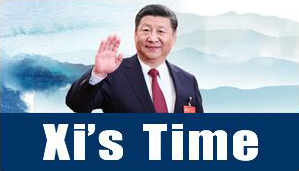Mortgage rates over the last seven days were varied, but an important rate moved up. Average 15-year fixed mortgage rates receded, while average 30-year fixed mortgage rates grew. We also saw a downward slide in the average rate of 5/1 adjustable-rate mortgages.
In March 2022, the Federal Reserve stepped in to combat surging inflation by hiking its key interest rate. Mortgage rates, which are not set by the central bank but are indirectly influenced by rate hikes, increased alongside. After 11 nearly consecutive rate increases, average mortgage rates are now above 7%.
While inflation has dropped from its record highs, it’s still above target. That means the Fed could continue to raise rates as it sees fit to increase the cost of borrowing and slow down the economy.
About these rates: Like CNET, Bankrate is owned by Red Ventures. This tool features partner rates from lenders that you can use when comparing multiple mortgage rates.
However, experts predict the Fed will hold off on another rate increase during its September meeting this week. Progress on inflation and other key economic indicators may ease some of the upward pressure on mortgage rates. But, if future inflation data comes in hotter than expected, mortgage rates could keep going up in 2023.
Fluctuations in the mortgage and housing markets are always going to happen. That’s why experts say it’s a good idea for homebuyers to focus on what they can control: getting the best rate for their financial situation.
To increase your odds of qualifying for the lowest rate available, take steps to improve your credit score and save for a down payment. Also, be sure to look at the annual percentage rate, or APR, which reflects the mortgage interest rate plus other borrowing charges. By looking at the total cost of borrowing from multiple lenders, you can make a more accurate apples-to-apples comparison.
30-year fixed-rate mortgages
The 30-year fixed-mortgage rate average is 7.59%, which is a growth of 3 basis points from seven days ago. (A basis point is equivalent to 0.01%.) Thirty-year fixed mortgages are the most frequently used loan term. A 30-year fixed rate mortgage will usually have a smaller monthly payment than a 15-year one — but usually a higher interest rate. Although you’ll pay more interest over time — you’re paying off your loan over a longer timeframe — if you’re looking for a lower monthly payment, a 30-year fixed mortgage may be a good option.
15-year fixed-rate mortgages
The average rate for a 15-year, fixed mortgage is 6.81%, which is a decrease of 1 basis point from seven days ago. Compared to a 30-year fixed mortgage, a 15-year fixed mortgage with the same loan value and interest rate will have a bigger monthly payment. But a 15-year loan will usually be the better deal, as long as you’re able to afford the monthly payments. These include usually being able to get a lower interest rate, paying off your mortgage sooner, and paying less total interest in the long run.
5/1 adjustable-rate mortgages
A 5/1 ARM has an average rate of 6.54%, a decrease of 1 basis point compared to a week ago. You’ll typically get a lower interest rate (compared to a 30-year fixed mortgage) with a 5/1 ARM in the first five years of the mortgage. However, changes in the market could cause your interest rate to increase after that time, as detailed in the terms of your loan. If you plan to sell or refinance your house before the rate changes, an adjustable-rate mortgage could make sense for you. Otherwise, changes in the market mean your interest rate might be significantly higher once the rate adjusts.
Mortgage rate trends
Mortgage rates were historically low throughout most of 2020 and 2021 but increased steadily throughout 2022 as the Federal Reserve began aggressively hiking interest rates. The top question is what the rest of 2023 has in store for prospective homebuyers.
“Today’s high mortgage rates are not the only challenge we have in the current market,” said Erin Sykes, chief economist at Nest Seekers International. “The combination of high interest rates plus sustained property prices and persistent inflation are making day-to-day life more expensive.”
While experts say mortgage rates are unlikely to return to the rock-bottom levels in the early pandemic, there’s a good chance we could see mortgage rates dip before the end of the year.
In order for that to happen, though, Sykes says we need to see inflation pull back on a consistent basis for at least four to six readings. If the federal funds rate remains steady, that should also help stabilize mortgage rates going into 2024.
Fannie Mae calls for the average 30-year fixed mortgage rate to close out the year at 7.1%.
30-year fixed-rate mortgages
The 30-year fixed-mortgage rate average is 7.59%, which is a growth of 3 basis points from seven days ago. (A basis point is equivalent to 0.01%.) Thirty-year fixed mortgages are the most frequently used loan term. A 30-year fixed rate mortgage will usually have a smaller monthly payment than a 15-year one — but usually a higher interest rate. Although you’ll pay more interest over time — you’re paying off your loan over a longer timeframe — if you’re looking for a lower monthly payment, a 30-year fixed mortgage may be a good option.
15-year fixed-rate mortgages
The average rate for a 15-year, fixed mortgage is 6.81%, which is a decrease of 1 basis point from seven days ago. Compared to a 30-year fixed mortgage, a 15-year fixed mortgage with the same loan value and interest rate will have a bigger monthly payment. But a 15-year loan will usually be the better deal, as long as you’re able to afford the monthly payments. These include usually being able to get a lower interest rate, paying off your mortgage sooner, and paying less total interest in the long run.
5/1 adjustable-rate mortgages
A 5/1 ARM has an average rate of 6.54%, a decrease of 1 basis point compared to a week ago. You’ll typically get a lower interest rate (compared to a 30-year fixed mortgage) with a 5/1 ARM in the first five years of the mortgage. However, changes in the market could cause your interest rate to increase after that time, as detailed in the terms of your loan. If you plan to sell or refinance your house before the rate changes, an adjustable-rate mortgage could make sense for you. Otherwise, changes in the market mean your interest rate might be significantly higher once the rate adjusts.
Mortgage rate trends
Mortgage rates were historically low throughout most of 2020 and 2021 but increased steadily throughout 2022 as the Federal Reserve began aggressively hiking interest rates. The top question is what the rest of 2023 has in store for prospective homebuyers.
“Today’s high mortgage rates are not the only challenge we have in the current market,” said Erin Sykes, chief economist at Nest Seekers International.
While inflation has dropped from its record highs, it’s still above target. That means the Fed could continue to raise rates as it sees fit to increase the cost of borrowing and slow down the economy.
However, experts predict the Fed will hold off on another rate increase during its September meeting this week. Progress on inflation and other key economic indicators may ease some of the upward pressure on mortgage rates. But, if future inflation data comes in hotter than expected, mortgage rates could keep going up in 2023.
Fluctuations in the mortgage and housing markets are always going to happen. That’s why experts say it’s a good idea for homebuyers to focus on what they can control: getting the best rate for their financial situation.
To increase your odds of qualifying for the lowest rate available, take steps to improve your credit score and save for a down payment. Also, be sure to look at the annual percentage rate, or APR, which reflects the mortgage interest rate plus other borrowing charges. By looking at the total cost of borrowing from multiple lenders, you can make a more accurate apples-to-apples comparison.
30-year fixed-rate mortgages
The 30-year fixed-mortgage rate average is 7.59%, which is a growth of 3 basis points from seven days ago. (A basis point is equivalent to 0.01%.) Thirty-year fixed mortgages are the most frequently used loan term. A 30-year fixed rate mortgage will usually have a smaller monthly payment than a 15-year one — but usually a higher interest rate. Although you’ll pay more interest over time — you’re paying off your loan over a longer timeframe — if you’re looking for a lower monthly payment, a 30-year fixed mortgage may be a good option.
15-year fixed-rate mortgages
The average rate for a 15-year, fixed mortgage is 6.81%, which is a decrease of 1 basis point from seven days ago. Compared to a 30-year fixed mortgage, a 15-year fixed mortgage with the same loan value and interest rate will have a bigger monthly payment. But a 15-year loan will usually be the better deal, as long as you’re able to afford the monthly payments. These include usually being able to get a lower interest rate, paying off your mortgage sooner, and paying less total interest in the long run.
5/1 adjustable-rate mortgages
A 5/1 ARM has an average rate of 6.54%, a decrease of 1 basis point compared to a week ago. You’ll typically get a lower interest rate (compared to a 30-year fixed mortgage) with a 5/1 ARM in the first five years of the mortgage. However, changes in the market could cause your interest rate to increase after that time, as detailed in the terms of your loan. If you plan to sell or refinance your house before the rate changes, an adjustable-rate mortgage could make sense for you. Otherwise, changes in the market mean your interest rate might be significantly higher once the rate adjusts.
Mortgage rate trends
Mortgage rates were historically low throughout most of 2020 and 2021 but increased steadily throughout 2022 as the Federal Reserve began aggressively hiking interest rates. The top question is what the rest of 2023 has in store for prospective homebuyers.
“Today’s high mortgage rates are not the only challenge we have in the current market,” said Erin Sykes, chief economist at Nest Seekers International.
11%20nearly%20consecutive%20rate%20increases,%20average%20mortgage%20rates%20are%20now%20above%207%.%20
While%20inflation%20has%20dropped%20from%20its%20record%20highs,%20it%E2%80%99s%20still%20above%20target.%20That%20means%20the%20Fed%20could%20continue%20to%20raise%20rates%20as%20it%20sees%20fit%20to%20increase%20the%20cost%20of%20borrowing%20and%20slow%20down%20the%20economy.%20
However,%20experts%20predict%20the%20Fed%20will%20hold%20off%20on%20another%20rate%20increase%20during%20its%20September%20meeting%20this%20week.%20Progress%20on%20inflation%20and%20other%20key%20economic%20indicators%20may%20ease%20some%20of%20the%20upward%20pressure%20on%20mortgage%20rates.%20But,%20if%20future%20inflation%20data%20comes%20in%20hotter%20than%20expected,%20mortgage%20rates%20could%20keep%20going%20up%20in%202023.
Fluctuations%20in%20the%20mortgage%20and%20housing%20markets%20are%20always%20going%20to%20happen.%20That%E2%80%99s%20why%20experts%20say%20it%E2%80%99s%20a%20good%20idea%20for%20homebuyers%20to%20focus%20on%20what%20they%20can%20control:%20getting%20the%20best%20rate%20for%20their%20financial%20situation.
To%20increase%20your%20odds%20of%20qualifying%20for%20the%20lowest%20rate%20available,%20take%20steps%20to%20improve%20your%20credit%20score%20and%20save%20for%20a%20down%20payment.%20Also,%20be%20sure%20to%20look%20at%20the%20annual%20percentage%20rate,%20or%20APR,%20which%20reflects%20the%20mortgage%20interest%20rate%20plus%20other%20borrowing%20charges.%20By%20looking%20at%20the%20total%20cost%20of%20borrowing%20from%20multiple%20lenders,%20you%20can%20make%20a%20more%20accurate%20apples-to-apples%20comparison.
30-year%20fixed-rate%20mortgages
The%2030-year%20fixed-mortgage%20rate%20average%20is%207.59%,%20which%20is%20a%20growth%20of%203%20basis%20points%20from%20seven%20days%20ago.%20(A%20basis%20point%20is%20equivalent%20to%200.01%.)%20Thirty-year%20fixed%20mortgages%20are%20the%20most%20frequently%20used%20loan%20term.%20A%2030-year%20fixed%20rate%20mortgage%20will%20usually%20have%20a%20smaller%20monthly%20payment%20than%20a%2015-year%20one%20–%20but%20usually%20a%20higher%20interest%20rate.%20Although%20you’ll%20pay%20more%20interest%20over%20time%20–%20you’re%20paying%20off%20your%20loan%20over%20a%20longer%20timeframe%20–%20if%20you’re%20looking%20for%20a%20lower%20monthly%20payment,%20a%2030-year%20fixed%20mortgage%20may%20be%20a%20good%20option.
15-year%20fixed-rate%20mortgages
The%20average%20rate%20for%20a%2015-year,%20fixed%20mortgage%20is%206.81%,%20which%20is%20a%20decrease%20of%201%20basis%20point%20from%20seven%20days%20ago.%20Compared%20to%20a%2030-year%20fixed%20mortgage,%20a%2015-year%20fixed%20mortgage%20with%20the%20same%20loan%20value%20and%20interest%20rate%20will%20have%20a%20bigger%20monthly%20payment.%20But%20a%2015-year%20loan%20will%20usually%20be%20the%20better%20deal,%20as%20long%20as%20you’re%20able%20to%20afford%20the%20monthly%20payments.%20These%20include%20usually%20being%20able%20to%20get%20a%20lower%20interest%20rate,%20paying%20off%20your%20mortgage%20sooner,%20and%20paying%20less%20total%20interest%20in%20the%20long%20run.
5/1%20adjustable-rate%20mortgages
A%205/1%20ARM%20has%20an%20average%20rate%20of%206.54%,%20a%20decrease%20of%201%20basis%20point%20compared%20to%20a%20week%20ago.%20You’ll%20typically%20get%20a%20lower%20interest%20rate%20(compared%20to%20a%2030-year%20fixed%20mortgage)%20with%20a%205/1%20ARM%20in%20the%20first%20five%20years%20of%20the%20mortgage.%20However,%20changes%20in%20the%20market%20could%20cause%20your%20interest%20rate%20to%20increase%20after%20that%20time,%20as%20detailed%20in%20the%20terms%20of%20your%20loan.%20If%20you%20plan%20to%20sell%20or%20refinance%20your%20house%20before%20the%20rate%20changes,%20an%20adjustable-rate%20mortgage%20could%20make%20sense%20for%20you.%20Otherwise,%20changes%20in%20the%20market%20mean%20your%20interest%20rate%20might%20be%20significantly%20higher%20once%20the%20rate%20adjusts.
Mortgage%20rate%20trends
Mortgage%20rates%20were%20historically%20low%20throughout%20most%20of%202020%20and%202021%20but%20increased%20steadily%20throughout%202022%20as%20the%20Federal%20Reserve%20began%20aggressively%20hiking%20interest%20rates.%20The%20top%20question%20is%20what%20the%20rest%20of%202023%20has%20in%20store%20for%20prospective%20homebuyers.%20
%E2%80%9CToday%E2%80%99s%20high%20mortgage%20rates%20are%20not%20the%20only%20challenge%20we%20have%20in%20the%20current%20market,%E2%80%9D%20said%20Erin%20Sykes,%20chief%20economist%20at%20Nest%20Seekers%20International.”>https://www.cnet.com/personal-finance/banking/the-fed-just-hiked-rates-again-that-means-different-things-for-your-money>11 nearly consecutive rate increases, average mortgage rates are now above 7%.
While inflation has dropped from its record highs, it’s still above target. That means the Fed could continue to raise rates as it sees fit to increase the cost of borrowing and slow down the economy.
However, experts predict the Fed will hold off on another rate increase during its September meeting this week. Progress on inflation and other key economic indicators may ease some of the upward pressure on mortgage rates. But, if future inflation data comes in hotter than expected, mortgage rates could keep going up in 2023.
Fluctuations in the mortgage and housing markets are always going to happen. That’s why experts say it’s a good idea for homebuyers to focus on what they can control: getting the best rate for their financial situation.
To increase your odds of qualifying for the lowest rate available, take steps to improve your credit score and save for a down payment. Also, be sure to look at the annual percentage rate, or APR, which reflects the mortgage interest rate plus other borrowing charges. By looking at the total cost of borrowing from multiple lenders, you can make a more accurate apples-to-apples comparison.
30-year fixed-rate mortgages
The 30-year fixed-mortgage rate average is 7.59%, which is a growth of 3 basis points from seven days ago. (A basis point is equivalent to 0.01%.) Thirty-year fixed mortgages are the most frequently used loan term. A 30-year fixed rate mortgage will usually have a smaller monthly payment than a 15-year one — but usually a higher interest rate. Although you’ll pay more interest over time — you’re paying off your loan over a longer timeframe — if you’re looking for a lower monthly payment, a 30-year fixed mortgage may be a good option.
15-year fixed-rate mortgages
The average rate for a 15-year, fixed mortgage is 6.81%, which is a decrease of 1 basis point from seven days ago. Compared to a 30-year fixed mortgage, a 15-year fixed mortgage with the same loan value and interest rate will have a bigger monthly payment. But a 15-year loan will usually be the better deal, as long as you’re able to afford the monthly payments. These include usually being able to get a lower interest rate, paying off your mortgage sooner, and paying less total interest in the long run.
5/1 adjustable-rate mortgages
A 5/1 ARM has an average rate of 6.54%, a decrease of 1 basis point compared to a week ago. You’ll typically get a lower interest rate (compared to a 30-year fixed mortgage) with a 5/1 ARM in the first five years of the mortgage. However, changes in the market could cause your interest rate to increase after that time, as detailed in the terms of your loan. If you plan to sell or refinance your house before the rate changes, an adjustable-rate mortgage could make sense for you. Otherwise, changes in the market mean your interest rate might be significantly higher once the rate adjusts.
Mortgage rate trends
Mortgage rates were historically low throughout most of 2020 and 2021 but increased steadily throughout 2022 as the Federal Reserve began aggressively hiking interest rates. The top question is what the rest of 2023 has in store for prospective homebuyers.
“Today’s high mortgage rates are not the only challenge we have in the current market,” said Erin Sykes, chief economist at Nest Seekers International.
Fannie Mae
calls for the average 30-year fixed mortgage rate to close out the year at 7.1%.
We use rates collected by Bankrate to track rate changes over time. This table summarizes the average rates offered by lenders across the US:
Today’s mortgage interest rates
| Loan term |
Today’s Rate |
Last week |
Change |
| 30-year mortgage rate |
7.59% |
7.56% |
+0.03 |
| 15-year fixed rate |
6.81% |
6.82% |
-0.01 |
| 30-year jumbo mortgage rate |
7.63% |
7.59% |
+0.04 |
| 30-year mortgage refinance rate |
7.78% |
7.77% |
+0.01 |
Rates as of Sept. 20, 2023.
How to find the best mortgage rates
When you are ready to apply for a loan, you can connect with a local mortgage broker or search online. In order to find the best home mortgage, you’ll need to consider your goals and current finances.
Specific mortgage rates will vary based on factors including credit score, down payment, debt-to-income ratio and loan-to-value ratio. Having a higher credit score, a higher down payment, a low DTI, a low LTV or any combination of those factors can help you get a lower interest rate.
Aside from the interest rate, additional costs including closing costs, fees, discount points and taxes might also affect the cost of your house. Make sure to comparison shop with multiple lenders — like credit unions and online lenders in addition to local and national banks — in order to get a loan that works best for you.
What’s the best loan term?
When picking a mortgage, you should consider the loan term, or payment schedule. The loan terms most commonly offered are 15 years and 30 years, although you can also find 10-, 20- and 40-year mortgages. Mortgages are further divided into fixed-rate and adjustable-rate mortgages. For fixed-rate mortgages, interest rates are fixed for the life of the loan. Unlike a fixed-rate mortgage, the interest rates for an adjustable-rate mortgage are only set for a certain amount of time (usually five, seven or 10 years). After that, the rate adjusts annually based on the current interest rate in the market.
One thing to consider when choosing between a fixed-rate and adjustable-rate mortgage is how long you plan on staying in your house. Fixed-rate mortgages might be a better fit for people who plan on living in a home for a while. While adjustable-rate mortgages can sometimes offer lower interest rates upfront, fixed-rate mortgages are more stable in the long term. However, you might get a better deal with an adjustable-rate mortgage if you only plan to keep your house for a couple years. There is no best loan term as a general rule; it all depends on your goals and your current financial situation. Make sure to do your research and know what’s most important to you when choosing a mortgage.
















